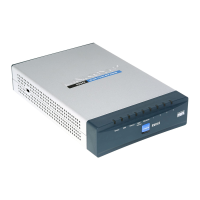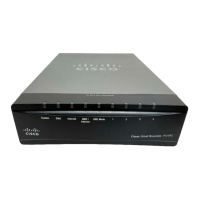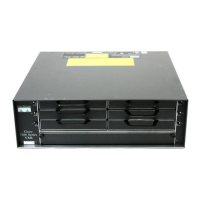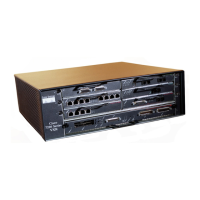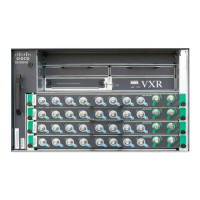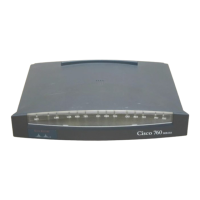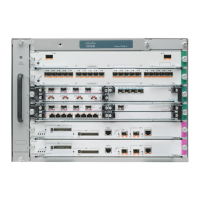3-33
Cisco 7200 VXR Installation and Configuration Guide
OL-5013-09
Chapter 3 Installing a Cisco 7200 VXR Router
Connecting I/O Controller, NPE-G1, or NPE-G2 Cables
Fast Ethernet MII Connections
The MII port on the I/O controller is a 40-pin, D-shell-type connector that is configurable for
100
megabits per second (Mbps). The MII port supports IEEE 802.3u interfaces compliant with the
100BASEX and 100BASET standards. The MII connection requires an external transceiver that permits
connection to 100BASEFX or 100BASET4 physical media. (See
Figure 3-26.)
Figure 3-26 Fast Ethernet Port Connection
Caution Before connecting the transceiver to the MII port on the I/O controller, check the MII transceiver
documentation (or with the transceiver manufacturer) to ensure that the transceiver responds to physical
sublayer (PHY) address
0; otherwise, anomalies with the MII connection on the I/O controller might
occur. (PHY address
0 is defined in section 22.2.4.4 “PHY Address” of the IEEE 802.3u specification.)
If you are unable to determine whether the transceiver responds to physical sublayer (PHY) address
0,
we recommend using the transceiver’s “Isolation Mode” setting, if present.
Note To determine if an MII transceiver that is already connected to the MII port on the I/O controller
responds to PHY address
0, ensure that the I/O controller Fast Ethernet port is configured as up and the
MII port is configured as the media type, and then disconnect the transceiver from the MII port. If the
Fast Ethernet port goes down, the transceiver responds to PHY address 0.
The type of media you use between the MII connection and your router, switch, or hub determines the
appropriate connectors for the network side of your 100BASET transceiver.
Figure 3-27 shows the pin orientation of the MII port on the I/O controller.
1 Optional Fast Ethernet interface (MII port and
RJ-45 port)
4 To transceiver, repeater, or DTE
2 MII connector 5 To repeater or DTE
3 RJ-45 connector

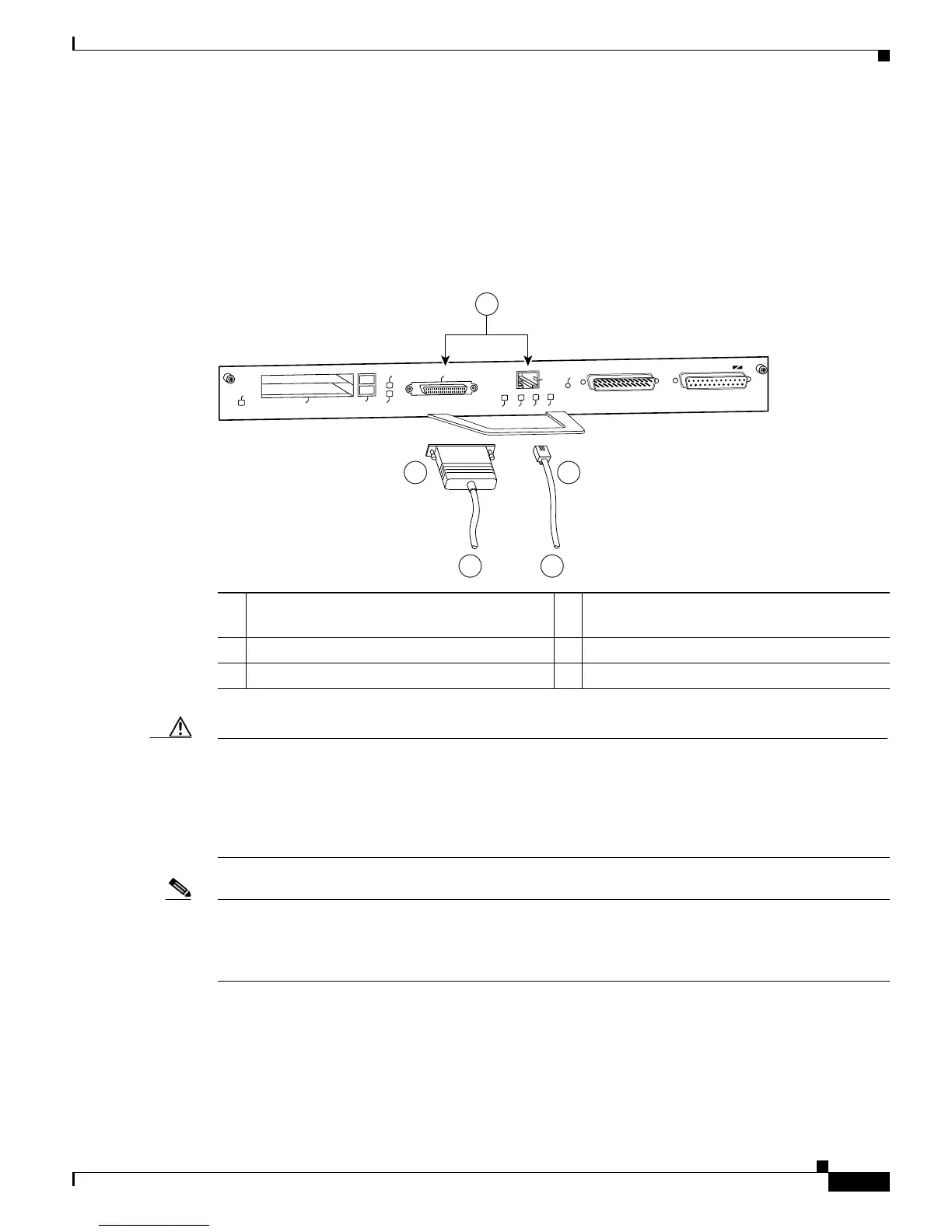